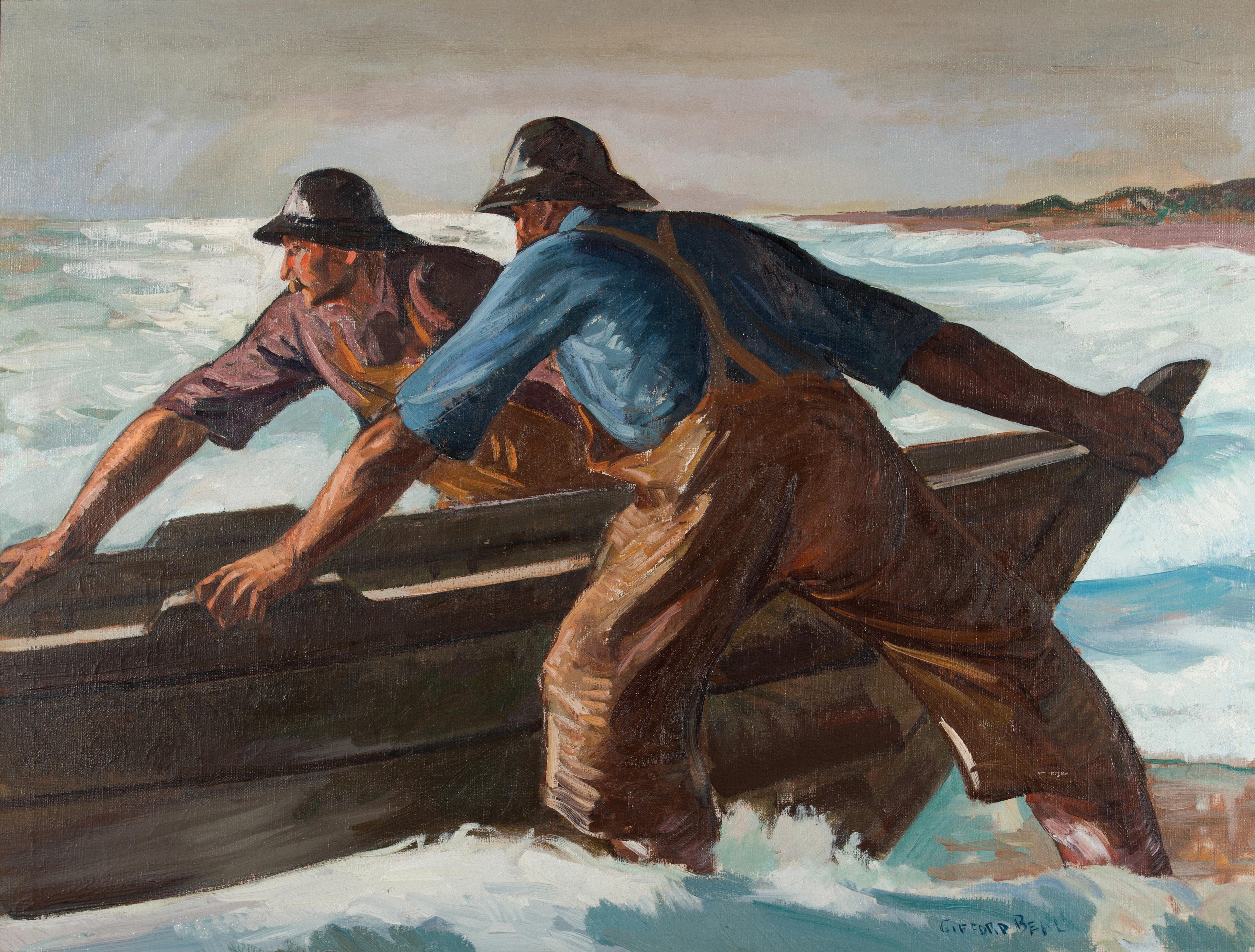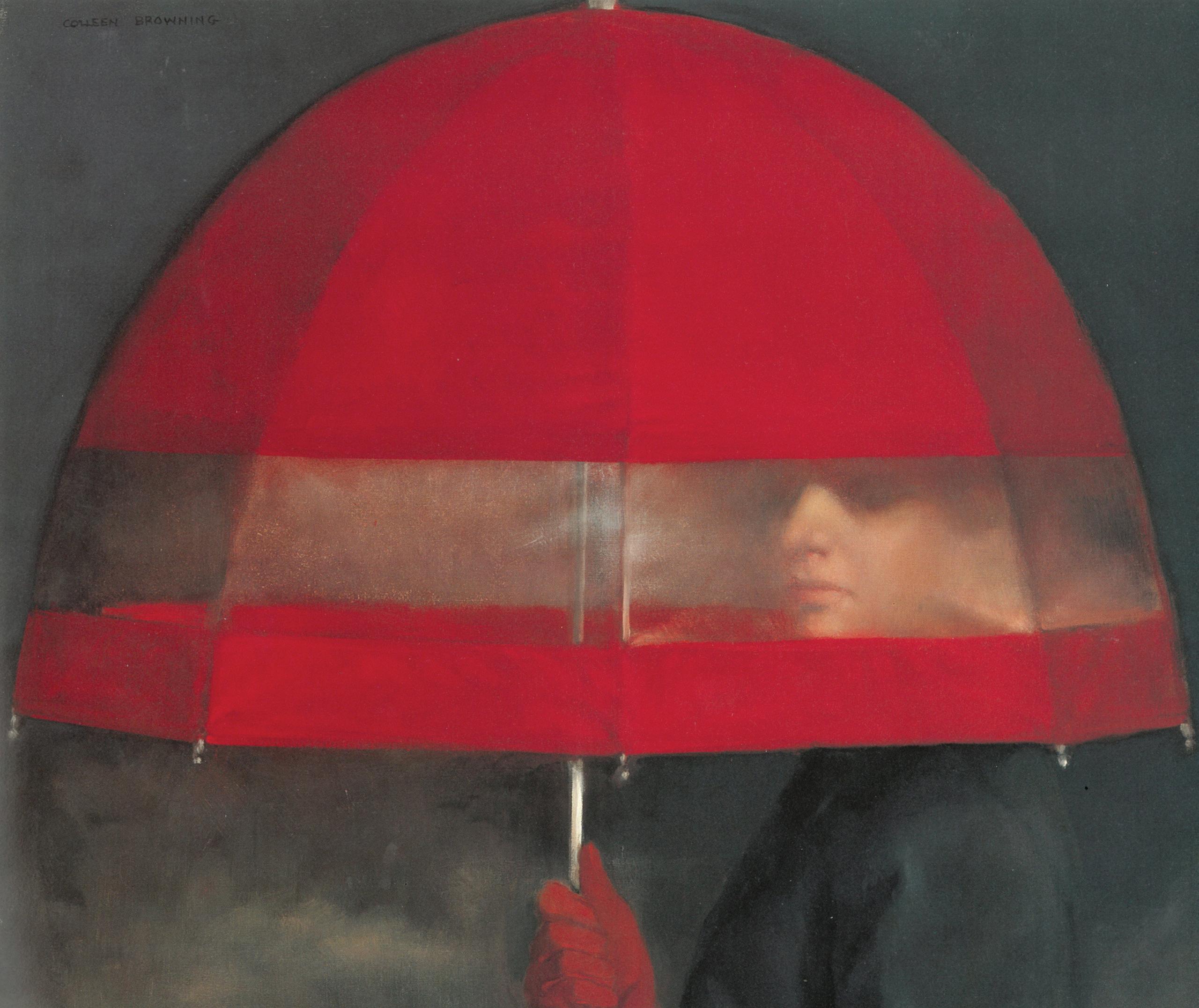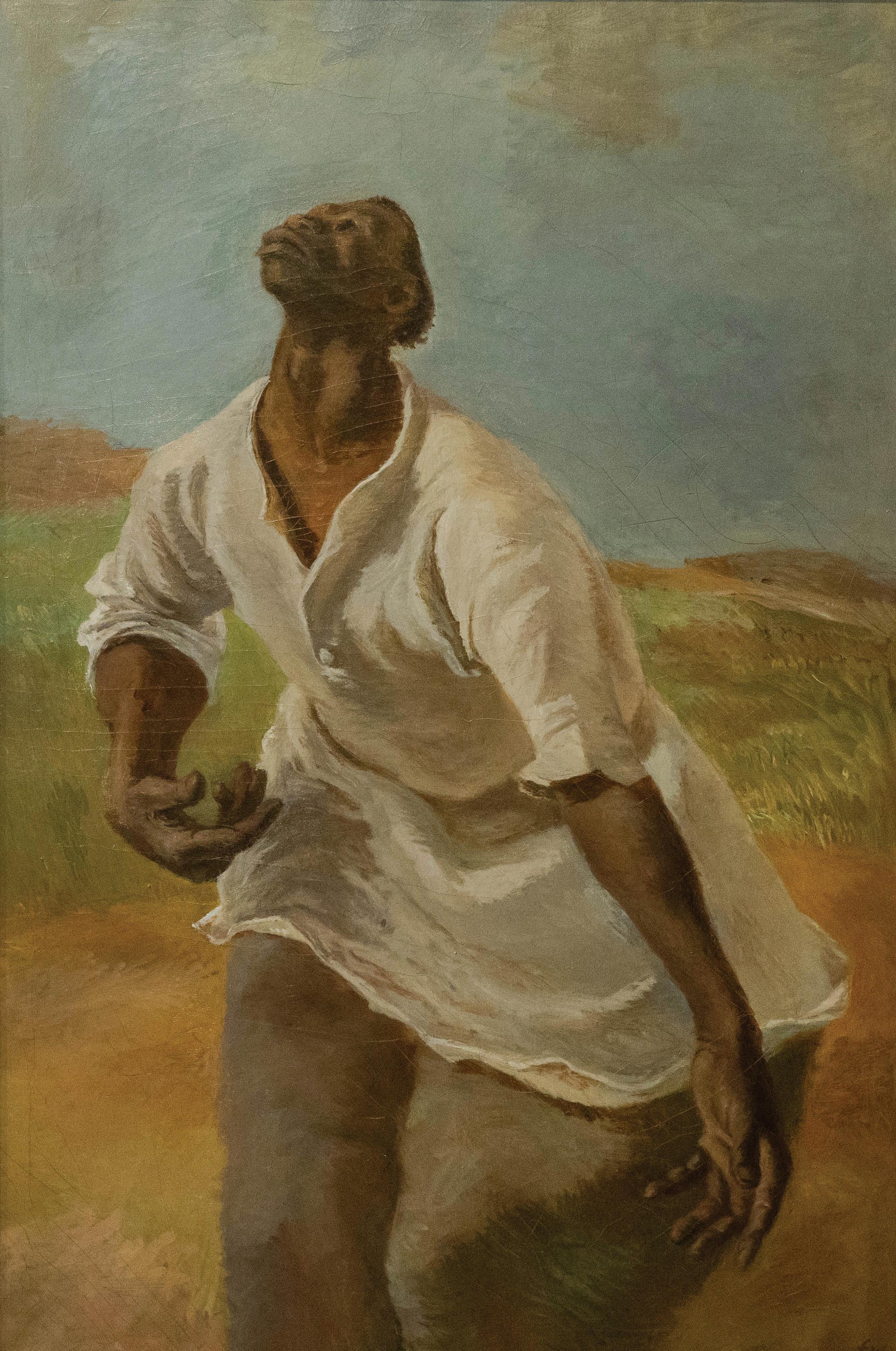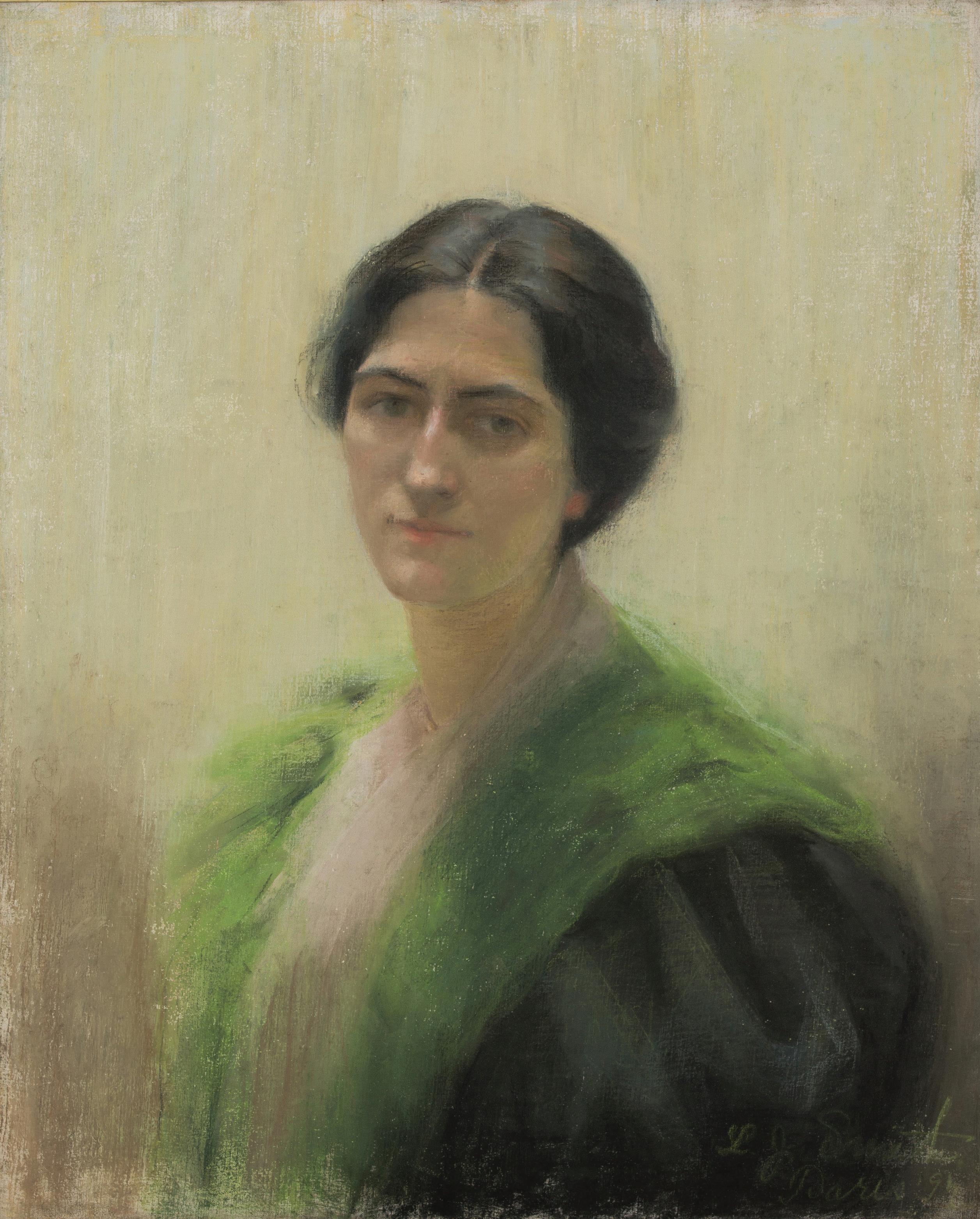
ART OF OUR TIME MAY 4 – AUGUST 4, 2024
MAY 4 – AUGUST 4, 2024


ART OF OUR TIME MAY 4 – AUGUST 4, 2024
MAY 4 – AUGUST 4, 2024
In honor of Randolph-Macon Woman’s College Class of 1974 Reunion, Art of Our Time is primarily a selection of work from the College’s permanent collection, displayed at their request. Recognizing the lifelong impact of being surrounded by art that both reflects contemporary society and represents the past, these classmates remember objects that played a meaningful role in their abundant life at the College and beyond.
In the Maier’s Thoresen Gallery, we have curated an exhibition of these choices, along with related works chosen by Maier staff. The result is a truly collaborative project conjuring a time and place that is both specific and timeless.
Many suggestions were for works already on view in our permanent collection galleries. Some requests were for work currently installed on main campus. We decided not to move these objects into Thoresen Gallery for Art of Our Time, but all selections in the museum have been identified and are included on the checklist.
This catalog includes selections from Thoresen, along with commentary by several members of the Class of 1974. For more quotes and narratives, QR codes have been installed near labels to tell a more abundant story.
Art of Our Time demonstrates the impact of art on the lives of our students. We hope this exhibition not only brings back cherished memories for the Class of 1974 but will also spark new conversations and connections for all visitors.
MarthaKjeseth Johnson, director Maier Museum of Art at Randolph College Spring, 2024
 Robert Remsen Vickrey (1926-2011), Sean’s Pulse, 1973, lithograph on paper, Gift of the artist, 1988; 77th Annual Exhibition.
Robert Remsen Vickrey (1926-2011), Sean’s Pulse, 1973, lithograph on paper, Gift of the artist, 1988; 77th Annual Exhibition.
What is the value of Art? How important is it in individual development? Having taught professionally in the American educational system for 19 years, served as a parent volunteer for decades, and been a mother for more than 40, I have some personal experience of this on-going debate. When budgets need to be cut, administrators’ salaries are seldom in question, but traditional art and music education are always being nudged towards the chopping block. After teaching students with skill gaps for years, I know how vital basic education can be. If you can’t express your own ideas clearly, you’ll find yourself shunted aside and dismissed. If you can’t manage your own finances, you may also find yourself living on the street, but I would argue that if you have nothing inside you to fall back on during the inevitable vicissitudes of life, that hole will eventually grow deeper and darker, isolating you from others, amplifying your pain, and slowly stripping you of both understanding and empathy. As students of Randolph-Macon Woman’s College in the 1970’s, none of us were ever placed in that unenviable position. Whatever our backgrounds, for four years the women of R-MWC lived with great paintings that became our mental wallpaper even as we internalized the poetry, prose, science, philosophy, and music that had shaped our world. Like the supportive friendships we made and the adventures we had, those images can “flame out, like shining from shook foil”1 whenever we need them. They lurk in the shadows of our brains, reminding us that even when a culture “red in tooth and claw”2 seems determined to tear itself apart or we become too conscious of “the turbid ebb and flow / Of human misery,”3 beauty remains. Even when we are “pitched past pitch of grief,”4 we are never alone—never comfortless! Someone somewhere once responded to life in a way that resonated with us—a way that made us think, or imagine, or simply savor that life a little more fully! Isn’t that one definition of Vita abundantior?
—Kathy Phares Farris ’741. Gerard Manley Hopkins, “God’s Grandeur”,
2. Alfred Lord Tennyson, “In Memoriam A.H.H.”
3. Matthew Arnold, “Dover Beach”
4. Gerard Manley Hopkins, “No Worse, There is None”
I was scandalized by Avery’s color palette but kept returning to this painting. It shocked & mesmerized me simultaneously.
—Joy Taylor ’74
There couldn’t be a more opposite painting style to what we see in Tom [by Robert Henri] than Avery’s abstract painting. Such a dichotomy was very intriguing as we were all discovering from Dr. Williams: that there are influences and movements in art, connected usually to what is happening in the world, that create the richness and challenge of what is the history of American painting over time. I happen to love Avery’s palette together with his abstractions. His colors are among the most exciting for me in all of painting. And you get even more from the colors, I think, because of their separation from each other in the carefully defined, angular, flat fields of this painting and so many of his works.
—Kristin Rehder ’74
This is a striking use of color and shape on a much loved, familiar theme. I connected with it because that was something that was also on display on the “Age of Aquarius” style posters all over my dorm room.
—Marguerite “Margie” Morris Dubay ’74
 Milton Avery (1885-1965), Child and Mother, 1946, oil on canvas.
Gift of Mr. and Mrs. Roy R. Neuberger, 1956.
Milton Avery (1885-1965), Child and Mother, 1946, oil on canvas.
Gift of Mr. and Mrs. Roy R. Neuberger, 1956.
I have always lived near the East Coast, and I love being near the ocean and the challenge of interacting with it. This painting is so dynamic I can almost smell the salt air.
—Marguerite “Margie” Morris Dubay ’74
Gifford Beal (1879-1956), Launching the Boat, 1930, oil on canvas. Purchase made possible by the Fine Arts Fund, 1932.
This painting was given as a memorial to Cynthia Hellman, who was killed in April of 1973 as she walked back from the block of stores beyond Presser Hall. I will never forget being asked by police if I had heard screams as I practiced in Presser, and the atmosphere in Main Hall as we all gathered in shock. This painting has always haunted me.
Ray Smith Berry ’74
Cynthia Hellman was a happy, beautiful girl who lived across the hall from me in Wright. I try to remember that and not that awful time.
Caroline Hairston English ’74
 Colleen Browning (1929-2003), Red Umbrella, 1970, oil on canvas. Gift of the Cynthia L. Hellman Memorial Fund, 1973.
Colleen Browning (1929-2003), Red Umbrella, 1970, oil on canvas. Gift of the Cynthia L. Hellman Memorial Fund, 1973.
In terms of the collection’s history, this is an important painting. Part of an exhibition in 1938, it was the second art work to be purchased by the Louise Jordan Smith Fund, but that’s not why I chose it. This painting used to live in the main reading room of Lipscomb Library, and I cannot begin to tell you how many hours I spent staring at it when I should have been solely focused on the essays I was supposed to be writing. It invited me into a world in which beauty and romance existed, but without self-consciousness, self-doubt, or the conflicts and complications of real life for an intelligent young woman in the early seventies. As I sat staring at this painting, I didn’t think about what the couple had been “up to,” or whether they were engaged, married, or simply “fooling around.” For me, they were as much an ideal of beauty as the figures on a certain Grecian Urn, and in my memory they’d remain “for ever young; / All breathing human passion far above”5 enshrined in their own “still unravish’d bride of quietness.”6 Unfortunately, every time I returned to the college after the collection had been moved to the Maier, Summer Afternoon was never on display. Finally I asked a curator why, and he confided that there had been complaints about the painting’s subject matter after school tours. Then he was kind enough to take me into the back room to visit Carroll’s “still unravish’d bride of quietness,” now affixed to a sliding wall of chain-link fence. I was deeply appreciative of the opportunity to see “my painting” again, but it felt a little like visiting an old friend in jail! The painting hadn’t changed since it was purchased in 1938; only the minds of those looking at it. Yet, like the ostracism of Hester Prynne, its banishment seemed curiously final until this exhibition offered me an opportunity to possibly “spring” it! I sincerely hope you will allow Summer Afternoon to once more “tease us out of thought…[for] When old age shall this generation waste…[Art] shalt remain.”7
—Kathy Phares Farris ’74
5. John Keats, “Ode to a Grecian Urn”
6. Ibid.
7. Ibid.
 John Carroll (1892-1959), Summer Afternoon, 1937, oil on canvas. Second purchase made possible by the Louise Jordan Smith Fund, 1938.
John Carroll (1892-1959), Summer Afternoon, 1937, oil on canvas. Second purchase made possible by the Louise Jordan Smith Fund, 1938.
The vigorous brushstrokes. The honesty in those young piercing eyes. Both are notable, but we also experience the psychology that Henri introduces: one side of the face in light, the other in greater darkness—a portentous human complexity, even in a child. I was very influenced by this painting when I later pursued photographic portraiture in some of my projects. And then there is Henri himself…such an innovative thinker, collaborator, and true leader in the art world (Ashcan, the Eight). I actually went to Monhegan once because I wanted to see the place where he so boldly interpreted the rugged coast of Maine as a painter.
—Kristin Rehder ’74 Robert Henri (1865-1929), Tom, 1926, oil on canvas. Eighth purchase made possible by the Louise Jordan Smith Fund, 1950.
Robert Henri (1865-1929), Tom, 1926, oil on canvas. Eighth purchase made possible by the Louise Jordan Smith Fund, 1950.
This was a controversial portrait of the much-loved president of the College while we were students. Many thought it did not flatter him, so a bust of him that was an amazing likeness was also created. However, the artistic techniques used by the artist, such as the rough brush and running one side of him off the edge, do draw attention and the slouched posture does suggest his approachable leadership and visionary style.
—Marguerite “Margie” Morris Dubay ’74
I remember it was part of an exhibit of a number of Pearlstein’s works in the big west hall off of Main Lobby, probably in 1972-1973. It seemed to me a wonderful departure from the seemingly lifeless portraits of other presidents. It exuded the kindness and respect I had always experienced from him.
—Ray Smith Berry ’74
 Philip Pearlstein (1924-2022), Portrait of William F. Quillian, Jr., 1971, oil on canvas. Gift of the Class of 1954, other alumnae, and friends, 1972.
Philip Pearlstein (1924-2022), Portrait of William F. Quillian, Jr., 1971, oil on canvas. Gift of the Class of 1954, other alumnae, and friends, 1972.
IT’S NO USE TO DO ANY MORE
BEN SHAHN
The somber palette depicts the consequences of radioactive fallout. I see this piece through my social justice lens, not as a pessimist outlook on the world. The two witnesses, painted in color not the monochromatic values of the rest of the painting, can still make a difference. They’re alive and to me represent hope. Making a difference is one the values that R-MWC instilled in me. The College enabled us to do more!
Katherine “Kitty” Stark Caldwell ’74
I believe this painting was on a lower level of the library. It seemed so hopeless, and mirrored feelings I had about politics of the time, including the Civil Rights struggles, Vietnam War, Watergate.
Ray Smith Berry ’74

Ben Shahn (1898-1969), It’s No Use To Do Any More, 1961, tempera on board. Purchase made possible by the
Louise Jordan Smith Fund, 1966.Egg tempera. That’s where we start with the exquisite painting, Pulse. So very few modern painters have employed it as Vickrey did. What a fabulous story he tells us and so expertly rendered in this almost translucent, photo-realistic execution, conveying the mystery of the moment: a gentle boy feels for his pulse. We were so fortunate that one day Pulse appeared over a fireplace in Main Hall lobby, where I got to see it into the years that I was working at the College, following graduation. This masterpiece led me down a very unexpected pathway of emotional connection to art—allowing a painting’s mystical quality and physicality to move me, to connect me with my own body, my heartbeat, my very aliveness. I breathe differently whenever I revisit Pulse.
—Kristin Rehder ’74 Robert Vickrey (1926-2011), Pulse, 1970, tempera on board. Purchase made possible by the Louise Jordan Smith Fund, 1973.
Robert Vickrey (1926-2011), Pulse, 1970, tempera on board. Purchase made possible by the Louise Jordan Smith Fund, 1973.
I was a voice music major by my junior year and always felt inspired by the power of this figure, and how even his body projected emotion, a gift we voice majors longed for.
—Ray Smith Berry ’74
 Franklin Chenault Watkins (1894-1972), Negro Spiritual, 1933, oil on canvas. Fourth purchase made possible by the Louise Jordan Smith Fund, 1942.
Franklin Chenault Watkins (1894-1972), Negro Spiritual, 1933, oil on canvas. Fourth purchase made possible by the Louise Jordan Smith Fund, 1942.
In the early years after I graduated, I realized that I could walk into almost any museum that had a distinguished collection of American paintings and, without looking at the labels, identify the artist. This was just one of the great gifts bestowed on me by our bold and demanding art history professor, Mary Frances Williams. She taught in a packed dark classroom, usually showing two slides on the screen for comparison, and opening our eyes, minds, and hearts to the artists and works she introduced us to. We dared not miss a word, not because of the grade we wanted, but because a lifetime of loving art was unfolding with each class session. She required, as I’m sure you know, that we stand in front of the marvelous paintings that we lived with throughout the College’s halls and buildings, and just look…just look. Most of us can still stare at a painting for a very long time, deep in thought, analysis, and wonder. I write all this with tears in my eyes for the gratitude I feel, and the honor of being taught by such a remarkable woman who changed the course of my life through her wisdom and passion. I majored in English literature, but I took away, in the classic liberal arts tradition, a new world of knowledge and curiosity about art, artists, and culture that has graced my 50 years since graduating.
—Kristin Rehder ’74 Louise Jordan Smith (1868-1928), Self Portrait, 1897, pastel on canvas, Bequest of the artist, 1929.
Louise Jordan Smith (1868-1928), Self Portrait, 1897, pastel on canvas, Bequest of the artist, 1929.
JOHN JAMES AUDUBON (1785-1851)
Marsh Wren (from The Birds of America), 1830, engraving on hand-colored paper; aquatint, 20 1/2 x 13 1/8 in. Bequest of Charlotte Stephenson Oresman ’41, in memory of her mother, Elizabeth Jackson Stephenson, Class of 1907, and in honor of her sister, Mabel Stephenson Haemmel ’46, 1979.
Gallery 1
MILTON AVERY (1885-1965)
Child and Mother, 1946, oil on canvas, 36 x 24 in. Gift of Mr. and Mrs. Roy R. Neuberger, 1956.
JOHN BAEDER (born 1938)
Famous Cottage, Lancaster, Pennsylvania, 1979, oil on canvas, 30 x 48 in. Purchase made possible by the Louise Jordan Smith Fund, 1980.
GIFFORD BEAL (1879-1956)
Launching the Boat, 1930, oil on canvas, 36 x 48 in. Purchase made possible by the Fine Arts Fund, 1932.
THOMAS HART BENTON (1889-1975)
Preparing the Bill, 1934, oil on canvas, 46 1/16 x 38 7/16 in. Tenth purchase made possible by the Louise Jordan Smith Fund, 1958.
Gallery 3
COLLEEN BROWNING (1929-2003)
Red Umbrella, 1970, oil on canvas, 25 x 29 1/4 in. Gift of the Cynthia L. Hellman Memorial Fund, 1973.
JOHN CARROLL (1892-1959)
Summer Afternoon, 1937, oil on canvas, 51 3/16 x 63 1/2 in. Second purchase made possible by the Louise Jordan Smith Fund, 1938.
MARY CASSATT (1844-1926)
Sketch of Mother and Daughter Looking at Baby, 1908, pastel on paper, 35 x 27 in. Sixth purchase made possible by the Louise Jordan Smith Fund, 1945.
Gallery 2
THOMAS COLE (1801-1848)
Corway Peak, New Hampshire, 1844, oil on canvas, 18 3/16 x 24 3/8 in. Purchase made possible by the Fine Arts Fund, 1948.
Gallery 1
ROY DEAN DE FOREST (1930-2007)
Untitled (Dog and Horse), 1974, lithograph on paper, 8 13/16 x 11 11/16 in. Gift of Suzanne Foley ’55, 1981.
ARTHUR DOVE (1880-1946)
Cow #1, 1935, tempera on canvas; wax emulsion, 15 1/8 x 21 1/8 in. Purchase made possible by the Fine Arts Fund, 1957.
Gallery 3
LOUIS H. DRAPER (1935-2002)
Blackboard, 1970, gelatin silver print on paper, 6 x 9 1/4 in. Gift of Anne Wilkes Tucker ’67, in honor of Hylan “Hank” and Christine Richardson Hubbard, 2015.
THOMAS EAKINS (1844-1916)
Portrait Sketch of William H. MacDowell, 1891, oil on canvas, 28 x 22 in. Purchase made possible by the Fine Arts Fund, 1941.
Gallery 2
WALTON FORD (born 1960)
Dying Words, 2005, etching on paper; aquatint; drypoint, 13 3/4 x 17 7/8 in. Purchase made possible by the Suzanne Goodman Elson ’59 Fund for Acquisitions, 2014.
HELEN FRAKENTHALER (1928-2011)
London Memos, 1971, acrylic on paper, 29 3/4 x 41 3/4 in. Gift of Katherine L. Magraw, Class of 1938, 1992.
Gallery 3
FREDERICK CARL FRIESEKE (1874-1939)
Rest, 1916, oil on canvas, 26 x 32 in. Purchase made possible by the Fine Arts Fund, 1930. Gallery 2
ROBERT SIMMONS FULLER (1923-1997)
The Great Letter G, n.d., oil on canvas, 33 1/2 x 33 1/2 in. Collection of the Maier Museum of Art at Randolph College, founded as Randolph-Macon Woman’s College.
PHILIP GUSTON (1913-1980)
The Street, 1971, lithograph on paper, 19 5/8 x 26 in. Gift of Mr. and Mrs. Samuel Dorsky, 1973.
FREDERICK CHILDE HASSAM (1859-1935)
Early Evening After Snowfall, 1906, oil on canvas, 30 1/16 x 25 1/16 in. Purchase made possible by the Fine Arts Fund, 1936. Gallery 2
ROBERT HENRI (1865-1929)
Portrait of Mrs. Robert C. Watts, 1926, oil on canvas, 40 5/8 x 32 5/8 in. Gift of Mr. Robert C. Watts, Jr., 1981.
ROBERT HENRI (1865-1929)
Tom, 1926, oil on canvas, 24 1/2 x 20 1/4 in. Eighth purchase made possible by the Louise Jordan Smith Fund, 1950.
EDWARD HOPPER (1882-1967)
Mrs. Scott’s House, 1930, oil on canvas, 34 1/4 x 50 1/8 in. First purchase made possible by the Louise Jordan Smith Fund, 1936. Gallery 3
JOHN FREDERICK KENSETT (1816-1872)
On the Connecticut Shore, 1871, oil on canvas, 27 1/4 x 44 3/4 in. Gift of Mr. T. F. Torrey II, 1955. Gallery 1
ERNEST LAWSON (1873-1939)
Moret-sur-Loing, 1893, oil on canvas, 26 1/8 x 32 1/16 in. Purchased by Randolph-Macon Woman’s College, 1927. Gallery 2
JACK LEVINE (1915-2010)
Café, 1960, oil on canvas, 42 x 48 in. Eleventh purchase made possible by the Louise Jordan Smith Fund, 1960.
Gallery 3
JULIUS GARIBALDI MELCHERS (1860-1932)
Little Red Riding Hood, 1897, oil on canvas, 52 1/16 x 38 3/4 in. Purchase made possible by the Fine Arts Fund, 1938.
Gallery 2
ELIZABETH MURRAY (1940-2007)
Heart with Bricks, 2000, oil on canvas, 58 x 43 in. Purchase made possible by alumnae and friends led by Katharine Stark Caldwell ’74 and Nancy Forsyth Sykes ’98, and the Louise Jordan Smith Fund and the Mary S. Schreyer Acquisition Fund in memory of her son George Sumter Schreyer and herself, on the occasion of the 50th anniversary of the museum facility and the 20th anniversary of its dedication as the Maier Museum of Art, 2003.
GEORGIA O’KEEFFE (1887-1986)
Yellow Cactus, 1940, oil on canvas, 12 x 16 in. Fifth purchase made possible by the Louise Jordan Smith Fund, 1944.
Gallery 3
PHILIP PEARLSTEIN (1924-2022)
Portrait of William F. Quillian, Jr., 1971, oil on canvas, 42 x 32 in. Gift of the Class of 1954, other alumnae, and friends, 1972.
(1859-1924)
The Idlers, 1916, oil on canvas, 21 x 32 in. Seventh purchase made possible by the Louise Jordan Smith Fund, 1949. Gallery 2
LEO RABKIN (1919-2015)
Shadow Box, 1969, acrylic construction, 36 1/4 x 36 1/4 in. Purchase made possible by the Fine Arts Fund, 1970.
BEN SHAHN (1898-1969)
It’s No Use To Do Any More, 1961, tempera on board, 25 1/2 x 39 1/4 in. Purchase made possible by the Louise Jordan Smith Fund, 1966.
Gandhi, 1965, serigraph on paper, 40 x 26 in. Purchase made possible by the Fine Arts Fund, 1966.
Levana, 1966, lithograph on paper, 23 1/2 x 14 3/4 in. Gift of Dr. Stephen Lee and Dolores Taller, in memory of William and Sarah Shedroff, 1996.
Warsaw, 1943, 1963, serigraph on paper, 26 1/2 x 23 in. Gift of Dolores Taller in memory of Stephen Lee Taller, 2000.
JOHN SLOAN (1871-1951)
Sun and Wind on the Roof, 1915, oil on canvas, 24 1/8 x 20 1/4 in. Purchase made possible by the Fine Arts Fund, 1947. Gallery 2
LOUISE JORDAN SMITH (1868-1928)
Self Portrait, 1897, pastel on canvas, 38 5/16 x 33 7/16 in. Bequest of the artist, 1929. Lobby
JOYCE STILLMAN-MYERS (born 1943)
Tana’s Sink, 1976, oil on canvas, 50 x 60 in. Purchase made possible by the Louise Jordan Smith Fund, 1980.
EMMA SERENA (QUEENA) DILLARD STOVALL (1887-1980)
Swing Low, Sweet Chariot, 1953, oil on canvas, 28 x 40 in. Purchase made possible by special fund, 1965.
GILBERT STUART (1755-1828)
Portrait of Mrs. Polly Hooper, 1811, oil on panel, 25 7/8 x 21 1/4 in. Purchase made possible by the Fine Arts Fund and Dr. and Mrs. Ben T. Bell (Dorothy L. Flinke ’26), 1961.
Gallery 1
ELLIOTT TWERY (1923-2007)
Off Main Street, n.d., oil on board, 23 5/16 x 19 3/8 in. Gift of the Estate of Mary Virginia Kagey ’23, 2003.
ANN VAN DE GRAAF
Garnell, 1974, oil on canvas, 13 1/4 x 10 1/4 in. Gift of Ann van de Graaf ’74, 2017.
ROBERT REMSEN VICKREY (1926-2011)
Pulse, 1970, tempera on board, 30 x 40 in. Purchase made possible by the Louise Jordan Smith Fund, 1973.
ROBERT REMSEN VICKREY (1926-2011)
Sean’s Pulse, 1973, lithograph on paper, 29 1/2 x 20 3/4 in. Gift of the artist, 1988.
FRANKLIN CHENAULT WATKINS (1894-1972)
Negro Spiritual, 1933, oil on canvas, 54 x 36 in. Fourth purchase made possible by the Louise Jordan Smith Fund, 1942.
